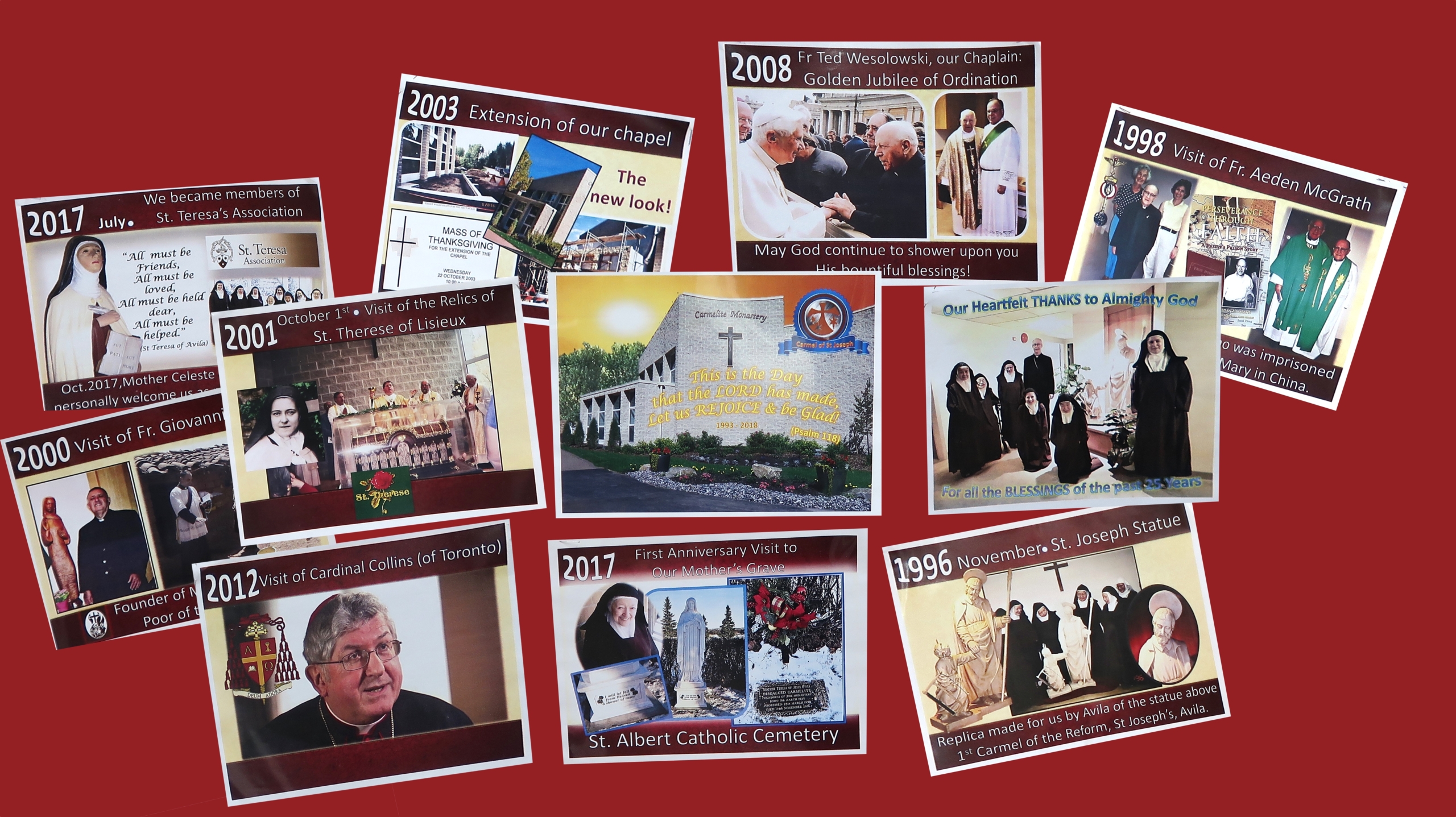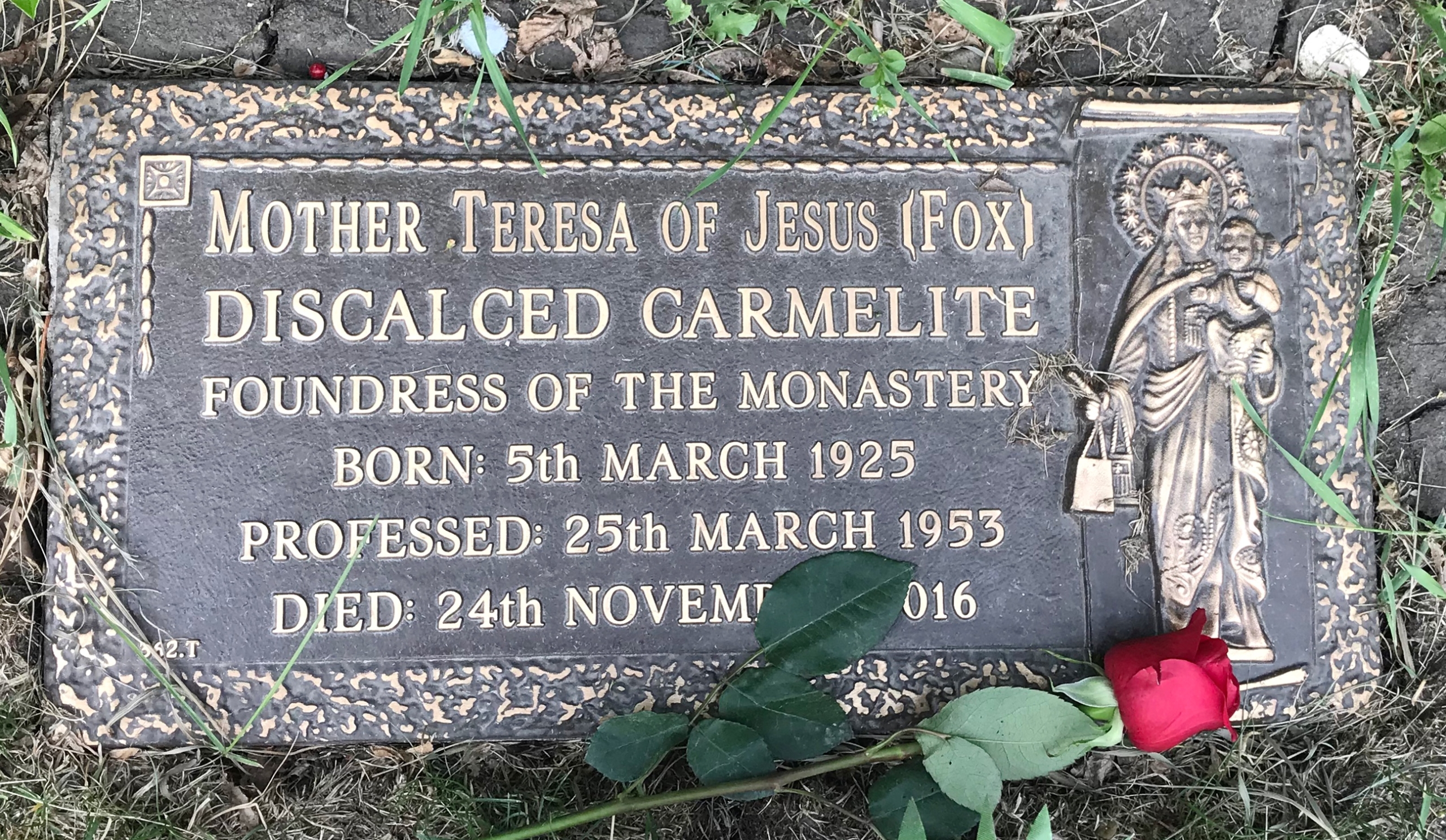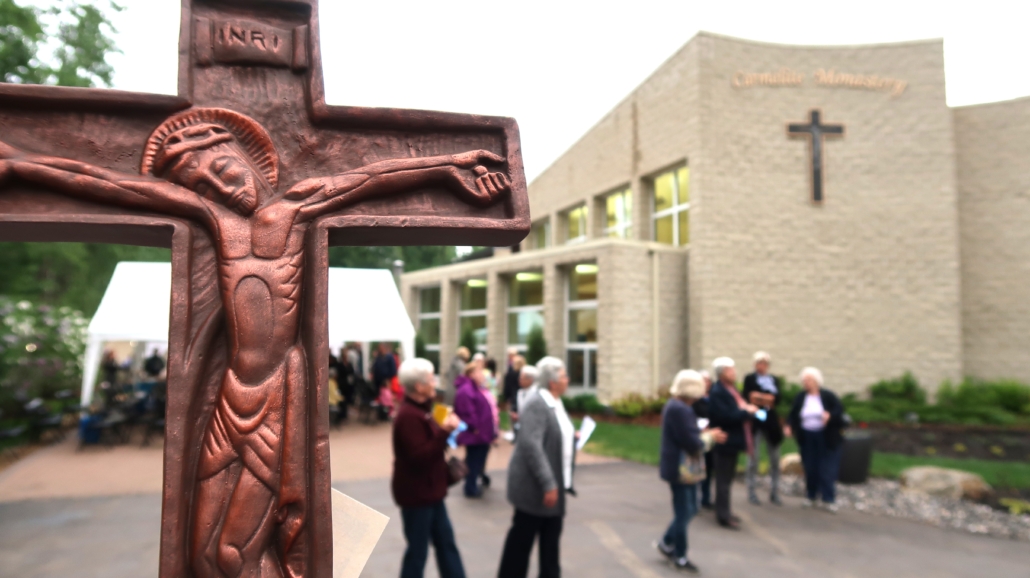I had been active in my faith in the Archdiocese of Edmonton for about five years before I learned of the existence of the Discalced Carmelite nuns of Spruce Grove, Alberta.
I was facing a serious health scare, and I turned to my dearest heavenly friend, St. Thérèse of Lisieux, for help. St. Thérèse, I knew, had been a Discalced Carmelite nun, but what I knew of her life seemed to belong to a world of long ago. Little did I know that there were women living this same way of life in my own diocese, in the present day.
When my prayers were answered, I looked for a way to express my deep gratitude to St. Thérèse. That’s when a friend told me about the Carmel of St. Joseph, located just 30 kilometres from Edmonton. I resolved to go to Mass there and offer a prayer of thanks.
 Even if Carmelite nuns still existed, I reasoned to myself as I drove, they would probably be very different nowadays than they had been in St. Thérèse’s day. I expected to find a residential house, with one of the rooms converted into a chapel. Imagine my surprise and awe when I turned down a tree-lined drive and saw a full-fledged monastery, designed according to a tradition stretching back 500 years.
Even if Carmelite nuns still existed, I reasoned to myself as I drove, they would probably be very different nowadays than they had been in St. Thérèse’s day. I expected to find a residential house, with one of the rooms converted into a chapel. Imagine my surprise and awe when I turned down a tree-lined drive and saw a full-fledged monastery, designed according to a tradition stretching back 500 years.
The simplicity and beauty of the building, and of the woodland surroundings, made a profound impression on me. Part of the monastery chapel is open to the public. The rest of the building and grounds are part of the enclosure, where only the nuns are permitted.
Discalced Carmelite nuns observe papal enclosure, which means that they only leave the enclosure for medical reasons. They are contemplative nuns, and so, unlike apostolic religious sisters, they do not have a ministry outside of the monastery. Their work is prayer — prayer for the Archdiocese, for the Church, the world, and especially for priests.
Unlike some contemplative communities, Carmelite nuns do not have a ministry of hospitality. Some contemplative nuns (Benedictines, for example) invite guests to stay at their monastery for retreats and offer spiritual direction. In contrast, part of the vocation of the Carmelite nun is to be hidden, hidden with Christ in God. For this reason, the nuns were not photographed or interviewed for this article.
The Sisters earn their income through the sale of their crafts. They create handmade cards, crucifixes, rosaries and scapulars, hand-knitted sweaters, and other items, which are then sold by friends of the community at parishes throughout the Archdiocese. The Sisters do not receive money from the Archdiocese or the Discalced Carmelite Order, but earn their living by the work of their hands and the providence of God through the generosity of benefactors.
During my first visit, I did not encounter any of the nuns. During the Mass, I could hear them singing from the choir (the nuns’ part of the chapel), which is separated from the public part by a wooden grille (barrier). The design of the chapel hid the nuns from my view.
During a later visit pre-arranged by email, I had the opportunity to speak with Mother Catherine, prioress of the community. Our visit took place in a room called the parlour. Members of the public can enter the parlour through one door, and the nuns can enter through another door.
I spoke to Mother through the wooden grille that divides the parlour. This arrangement enables the Sisters to maintain their enclosure when visiting with their family members or other members of the public.
After my first few visits, I was curious to find out more about the Discalced Carmelites, and how they came to be the only contemplative nuns in the Archdiocese of Edmonton. I learned from my visit with Mother Catherine that the foundresses of the Carmel of St. Joseph came to Canada from Macau in the early 1990s. The Sisters were facing danger and persecution in Macau, and Archbishop Joseph MacNeil invited them to the Archdiocese of Edmonton.
The foundresses overcame huge obstacles to come to Canada, and the monastery chapel was consecrated on May 31, 1993. Since then, they have welcomed Canadian-born women into their community. The community celebrated the 25th anniversary of their foundation in the Archdiocese on May 30.
The Carmelite Order traces its roots back to a group of crusaders-turned-hermits who settled on Mount Carmel in the Holy Land in the 12th century. Disillusioned by the violence of the Crusades, they sought a different way to follow Jesus — a way of prayer, silence, and intimacy with God. Later, women also began answering God’s call to Carmelite life.
 A major turning point came in the 16th century. The order had lost sight of its roots, and the zeal of its members had dimmed. St. Teresa of Avila and St. John of the Cross reformed the order, beginning in their homeland of Spain. Their efforts resulted in the reformed or Discalced Carmelites, who lived according to the original Rule of the Order.
A major turning point came in the 16th century. The order had lost sight of its roots, and the zeal of its members had dimmed. St. Teresa of Avila and St. John of the Cross reformed the order, beginning in their homeland of Spain. Their efforts resulted in the reformed or Discalced Carmelites, who lived according to the original Rule of the Order.
The word “discalced” is Latin for “shoeless.” In the 16th century, shoes were a symbol of wealth and luxury. St. Teresa wanted the Discalced Carmelites to wear sandals instead of shoes, to symbolize their solidarity with the poor, and with Christ, who was poor, chaste, and obedient.
One of the prayers offered during the 25th Anniversary celebration on May 30 asked
God to bless the community with new vocations to carry on the work of prayer and worship, in the footsteps of great Carmelite women such as St. Teresa of Avila and St. Thérèse of Lisieux.
What might be some signs that a young woman has a calling to this way of life? Carmel has often been described as the heart of the Church. The Body of Christ has many members that perform different functions, but none can get along without the heart. The lifeblood of prayer and worship sustains all the apostolic activities of the Church.
A woman with a vocation to Carmel desires to be love in the heart of the Church, and to offer her entire being to God for His glory. She desires to live a life of intimacy with Jesus, praying for the Church, the world, and especially for priests.
In the Carmelite tradition, this life of prayer is lived in the context of sisterhood. As St. Teresa of Avila explained: “All must be friends, all must be loved, all must be held dear, all must be helped.” It is in this context of community that a Carmelite lives out her life of prayer.
For more information on the vocation to Carmel, visit the community’s website.
– Rose Derksen is a pastoral assistant at the parishes of St. Alphonsus and St. Clare in Edmonton.

